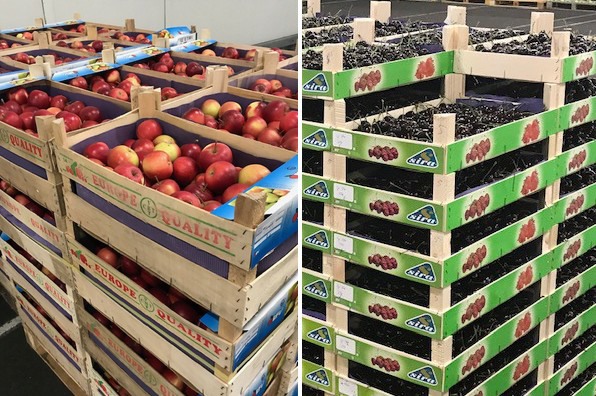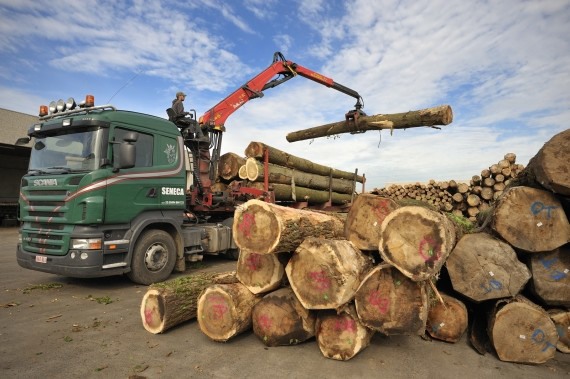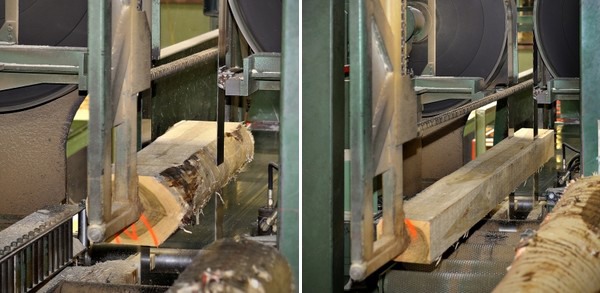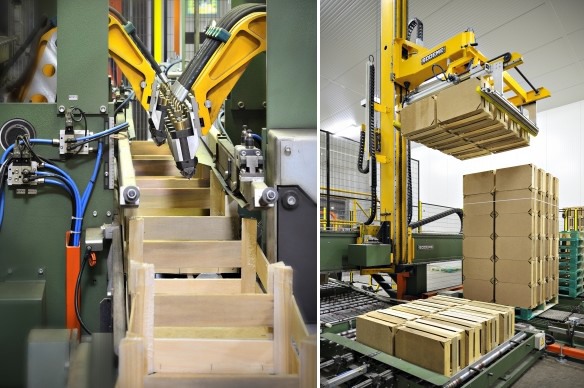Several media reports claim that prices have recently been dropping sharply on the global timber market. Is the end of the unprecedented rise in timber prices in sight? "No," say the Dutch Packaging and Pallet Industry Association (EPV) and VVNH (Royal Association of Dutch Timber Companies). Several wood processing companies like the DDS Kistenfabriek agree. This Belgian company manufactures crates.

DDS Kistenfabriek's fruit crates.
"Prices are still climbing. We used to be able to set a seasonal price. Now, we can't make long-term fixed prices. They're revised every month, or even twice a month," says DDS Kistenfabriek's Dirk D'Holieslager.

DDS Kistenfabriek stocks its own wood, so it can always use fresh timber.
Raw materials crisis needs government intervention
DDS Kistenfabriek uses mostly poplar and pine. They produce a wide variety of fruit and vegetable crates. They don't have to get, say, poplar from far away. It generally comes from Belgian plantations. However, the scarcity in the wood market means the company is increasingly forced to import from abroad. "Government policy is failing. Countries like Russia are restricting timber exports to China. That's to prevent the market from being emptied. Even in France, exported wood must first be processed."
"But in Belgium, too little is done to regulate timber exports. So, there's not enough left over for the domestic market." Dirk wants a clear governmental plan for plant cultivation. It must deal with the scarcity. Poplars take 25 years to grow tall enough to cut. Long-term planning is, therefore, necessary. "We have large stocks, so we aren't experiencing any production issues. We can continue supplying our customers. But in other industries, like the pallet industry, the problem is far more serious," Dirk says.

DDS Kistenfabriek's automated processing process.
Then why is the media reporting that prices are falling?
The reports about declining timber prices are based on the US Nasdaq Lumber futures. That dropped after the historic high on May 5, 2021. They fell from nearly $1,700 BDFT to the current roughly $900 BDFT, EPV says. However, this has little impact on timber prices in the Netherlands. This country gets most of its wood from Europe.

Dirk D'Holieslager, DDS Kistenfabriek: "We can, fortunately, still meet client demand."
Developments that affect wood timber prices
The EPV says several developments affect timber prices.
Vacations: It's almost the summer vacation period and many sawmills will soon close for two to three weeks. That means a noticeably lower output than the previous quarter and, so, limited upscaling possibilities.
Sawmill stocks: Sawmills usually accumulate stock before the summer break. But, most currently still have stocks that have never been as low. That's because of the limited availability of European wood.
Full orders/maximum output: The sawmill sector is still struggling with limited production capacity versus their order intake. The third quarter, with its limitations, certainly won't make up for this.
Transport: Transportation is a headache for many markets at the moment. Transportation availability is an inhibiting factor. The shortage of trucks and containers makes it extremely expensive.
China: There's a persistently high demand from this country. They're an even bigger constant timber market determinant than the US. That demand is currently only limited by transportation issues. As soon as that's resolved, the pressure on the European timber market will only increase.
Catching up: Wood supplier prices are catching up. Market pressure means they're waiving many quarterly agreements with purchasing organizations. Most suppliers now use monthly or even daily prices. Timber buyers have to deal with interim price increases. That can only be explained by low stock levels and excessive demand.
No effect, stabilization from increased Scandinavian pine production
Scandinavia produced far more pine in the first months of this year compared to the same time in 2020. Yet, stocks continue to lag. Despite this increased production, stocks there are still historically low. Sawmills were sold out for 2021's Q1. This tight market should continue until the fourth quarter at least. The effect on prices will vary. But there has already been a 45% rise, in addition to already-increased prices.
Prices in the US are dropping. The question now is how the German sawmills will eventually react. Availability for Europe might increase again. But the effect, if any, won't be evident until in or after 2021's Q4. That's according to the NTTA.
"Annually, a billion m3 of trees are grown in European plantations. Of these, 600 million are felled. It's been calculated that you need 15 million m3 for 300,000 timber houses. So, there's no shortage of forest areas, timber supply, and wood construction opportunities. We have sustainably produced timber products. That means we're on the right side of the line. Supply and demand will certainly balance out again," concludes Paul van den Heuvel, VVNH chairman.
For more information:
Dirk D'Holieslager
DDS Kistenfabriek
Tel: +32 (0) 553 34 911
Email: dirk@ddskist.be
Website: www.ddskist.be

